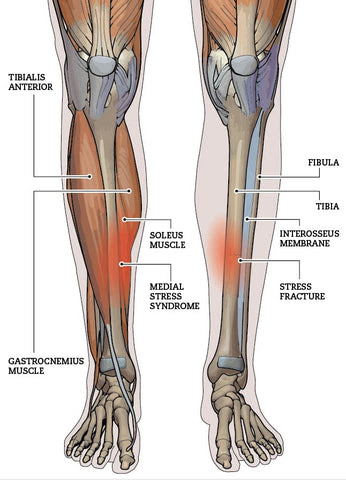Balance Your Runs With Recovery
Written By: Roy Choquette CSCS, CES
I'm going to go ahead and make the assumption that if you're reading this, you've probably gone for a run at some point in your life. Maybe because you enjoy it, maybe because you're trying to shed a few pounds, or maybe because you needed to clear your mind and relieve stress. Overall, running is arguably the most popular form of exercise. Especially nowadays with social distancing!
It makes sense; it’s a natural form of movement and a very convenient way to stay active. Running is a fantastic exercise, however, too much of it can wreak havoc (even on a skilled runner).
For example, spinach is a healthy superfood. Should we continually eat pounds and pounds of it every day since it's good for us? Not necessarily. We need to balance our diets with other foods that provide us rich nutrients and vitamins that spinach might not have. The same holds true for all forms of exercise. Moderation is key!
When I say to balance out your activities I’m not talking about the concept of cross-training, I’m talking specifically about recovery and mobility.

Shin Splints
We need to be mindful of the amount of stress we are placing on our body’s tissues when we go for a run. The repetitive impact from the ground takes a toll on your body the longer you endure. If your body doesn't have enough time to recuperate from that stress, it's likely going to start acting up in the form of pain or discomfort.
Interestingly enough, one of the most common running overuse injuries is Medial Tibial Stress Syndrome (MTSS), also known as shin splints. I know a lot of people who suffer from calf and shin pain, but I don't know many people who really know HOW to treat issues in their shins. Shin splints are not something to ignore, a few more runs and you could be suffering from a tibial stress fracture, rather than shin splints.
My first recommendation is, don’t wait until you’re in pain to do something proactively.

Self-Myofascial Release Recommendations For Shin Splints
- Grab a RAD Roller or the green RAD Round and place it on the ground. Give yourself enough room to spread your arms.
- Gently set your heel on top of the ball and make sure you're balanced. Then gently flush the bottom of the foot by rolling the tool from the heel toward the toes, and back again.
- Repeat on the other foot.
- As you’ve been flushing each foot you may have come across spots that could use a little extra attention. If that's you, I recommend pausing on top of them and applying the desired amount of pressure. Hold for 10 more of those meditative breaths; this is called the Pin and Hold Technique.

2. Shin (~ 1 minute each leg)
- If this is proactive and/or maintenance work you should be able to spend less than a minute on each leg. If you’re experiencing a lot of soreness, spending an extra minute on each side may be wise.
- Grab either the RAD Roller or RAD Helix. Both have a groove in the middle to protect the shin bone. place the tool on your shin area with the groove aligned over your shin bone.
- From a quadruped position (all 4’s) place your shin in the groove of either tool and lightly flush back and forth. Settle your weight down until you are 4-5 on the scale of sensation.
- It’s very important that you’re not rolling over the actual shin bone. SMR should not be done over bony processes.
- Repeat the Flushing with the other leg
- Now let’s utilize the Pin and Hold Technique just like you did on your feet.
- Find a spot on the area that you were just flushing that was a little extra sensitive. Use the Pin and Hold Technique on this spot for 10 deep breaths.

- I’d recommend the RAD Roller for calf work but feel free to use what you have and try different tools to see what works best for you.
- Flush the calf from above the heel to an inch or so below the back of the knee using the same technique we began with on the foot and shin earlier. Remember to take 10 deep breathes
- Repeat on the other leg.
- Find an interesting/sore spot? Pin and Hold there for 10 deep breaths
- If you want to make this more advanced or are having trouble finding the right level on your personal pain scale, grab your RAD Block. Flip it so the flat side is up and set your RAD Roller on top of it (see image). This will put your leg at a different angle and allow a new pressure.
- Need even more? Lightly cross your ankles so the weight of your second leg is resting on top.

It's 'shin splints'. Why spend time on other muscle groups?
Are there other areas I should focus on as a runner?
Yes. Continue to Flush, Pin and Hold on the hamstrings, quads, glutes, mid-back and even suboccipital (lower skull, see below).
How often should I do this?
Every day! Most things get easier to perform when they become a habit. SMR should be part of your daily self-care rituals like brushing your teeth and taking a shower.
Pro Tip: Have your SMR tools in the bathroom or bedroom so they are easy to grab and start rolling!Keep rolling and stay RAD!



















